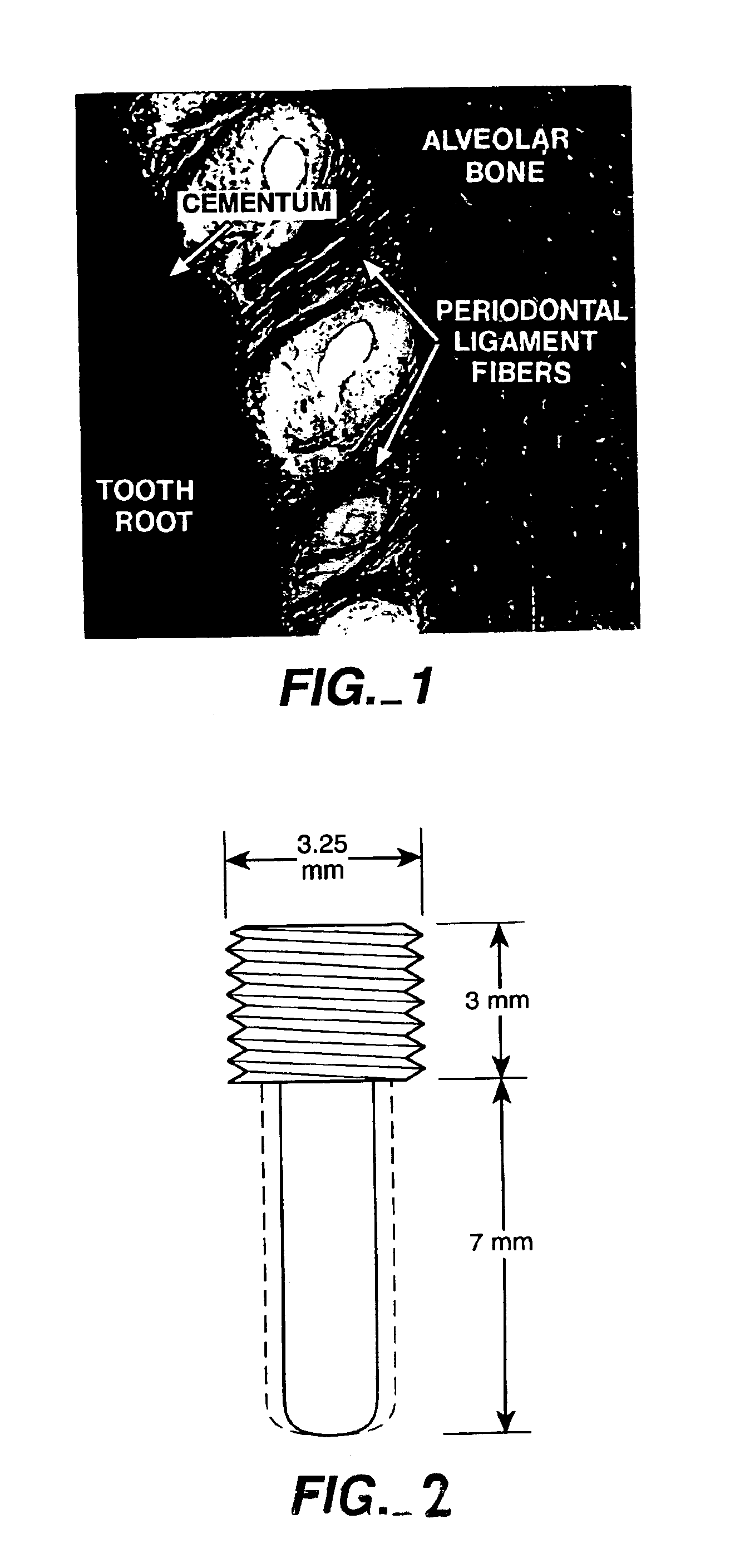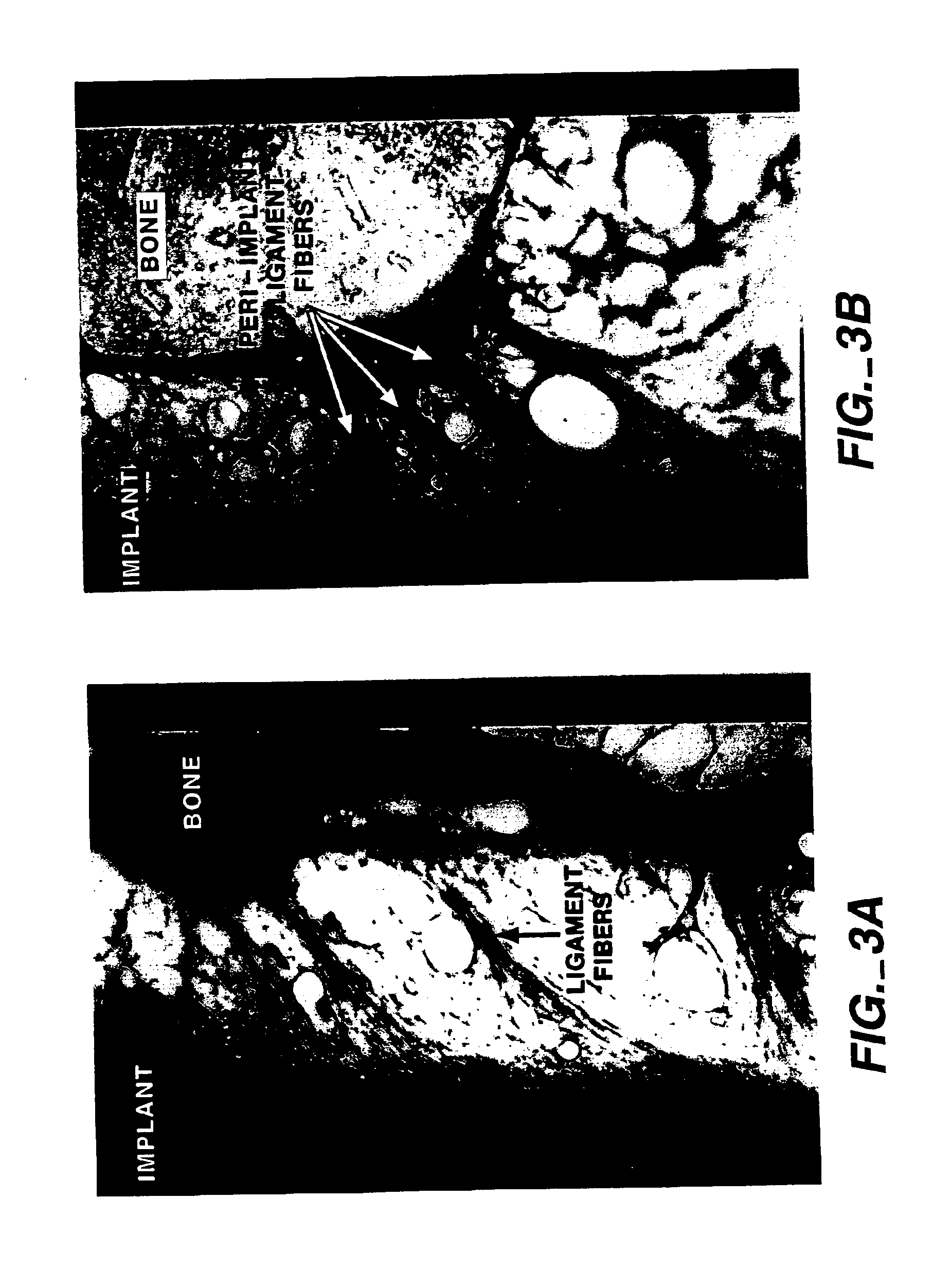Combined use of cementum attachment protein and cyclosporin a for improved attachment of dental and orthopedic implants
a technology of dental and orthopedic implants and cementum, which is applied in the field of dentistry and orthopedic surgery, can solve the problems of affecting the use of fixed bridges, splints, and other prostheses, and elicit destructive inflammatory responses, and achieve the effects of strengthening the attachment of tendons, ligaments and joint capsules, and strengthening the attachment of fibrous structures to bon
- Summary
- Abstract
- Description
- Claims
- Application Information
AI Technical Summary
Benefits of technology
Problems solved by technology
Method used
Image
Examples
examples
[0046]The following examples are given to enable those skilled in the art to more clearly understand and to practice the invention. They should not be considered as a limitation of the invention, but merely as being illustrative and representative thereof.
Preparation of CAP
[0047]A highly purified bovine CAP preparation was disclosed in Wu et al., “Characterization of a Collagenous Cementum-Derived Attachment Protein.” J Bone Miner Res 11:686-692, 1996. CAP can be produced by other less effective methods. Human CAP can be prepared similarly. Briefly, CAP was first extracted from cementurn in 2.0 N HCOOH containing proteinase inhibitors and then with 4M guanidine HCI. Guanidine extracts were loaded on a diethylarnino ethyl (DEAE) cellulose column for chromatography, and next purified by sodium dodecyl sulfate (SDS)-polyacrylamide gel electrophoresis and C18 reverse-phase high-performance liquid chromatography. The purified preparation contained a single protein band electrophoreticall...
PUM
| Property | Measurement | Unit |
|---|---|---|
| molecular mass | aaaaa | aaaaa |
| pharmaceutical composition | aaaaa | aaaaa |
| structure | aaaaa | aaaaa |
Abstract
Description
Claims
Application Information
 Login to View More
Login to View More - Generate Ideas
- Intellectual Property
- Life Sciences
- Materials
- Tech Scout
- Unparalleled Data Quality
- Higher Quality Content
- 60% Fewer Hallucinations
Browse by: Latest US Patents, China's latest patents, Technical Efficacy Thesaurus, Application Domain, Technology Topic, Popular Technical Reports.
© 2025 PatSnap. All rights reserved.Legal|Privacy policy|Modern Slavery Act Transparency Statement|Sitemap|About US| Contact US: help@patsnap.com



